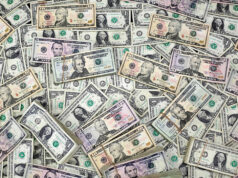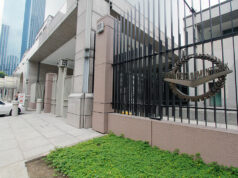Price hikes expected to have picked up in July
By Melissa Luz T. Lopez
Senior Reporter
INFLATION likely picked up slightly in July on the back of higher prices of food, electricity, and fuel, analysts said in a BusinessWorld poll, even as some said the relatively steady pace should allow the central bank to keep interest rates unchanged for now.
The poll of 10 economists late last week yielded a median inflation estimate of 2.85%, which if realized will inch up from June’s 2.8% reading and from July 2016’s 1.9%. Finance Undersecretary Gil S. Beltran gave a 2.7% estimate last week.
The Philippine Statistics Authority is scheduled to report official inflation data on Friday.
The economists pegged July inflation at 2.7-3.0%, assured that the pace of price increases will remain well within the central bank’s 2-4% target band for the year.
Inflation averaged 3.1% last semester, matching the full-year 2017 forecast given by the Bangko Sentral ng Pilipinas (BSP) during its June 22 monetary policy review.
“I think the main drivers of July inflation are food price inflation, the electricity rate hike and higher fuel prices,” Angelo B. Taningco, economist at Security Bank Corp., said in an e-mail.
Fuel retailers had announced a P0.70 per liter increase in gasoline prices and P1.20/liter for diesel effective July 11 due to higher world crude prices. This was followed by price rollbacks a week later amid persistent doubts that moves by the Organization of the Petroleum Exporting Countries can sufficiently trim a huge supply glut and lead to a recovery in global prices.
 Power distributor Manila Electric Co. announced a P0.0761-per-kilowatt-hour increase in basic rate following June’s P1.43/kWh record cut. July’s P0.0799/kWh hike in generation charge was partly offset by a refund for 2014-2016 over-collections.
Power distributor Manila Electric Co. announced a P0.0761-per-kilowatt-hour increase in basic rate following June’s P1.43/kWh record cut. July’s P0.0799/kWh hike in generation charge was partly offset by a refund for 2014-2016 over-collections.
Ildemarc C. Bautista, vice-president and head of research at Metropolitan Bank & Trust Co., said inflation likely steadied in July as movements in food costs kept overall prices relatively balanced. In particular, the impact of higher prices of beef, pork and chicken was offset by lower costs of rice, fruits and vegetables.
The recent weakness of the peso may have also contributed to price increases in July after it touched fresh 11-year lows in the last two weeks, although several analysts said that the impact on overall inflation was “modest.”
“We agree with Deputy Governor [Diwa C.] Guinigundo’s assessment that the inflation pass-through impact of the peso has diminished significantly. To us, this means BSP can be even more flexible about the daily movement of the foreign exchange as newly appointed BSP Governor [Nestor A.] Espenilla has been saying lately,” said Emilio S. Neri, Jr. lead economist at Bank of the Philippine Islands.
Mr. Guinigundo has said that swings in the daily peso-dollar exchange rate have little impact on overall inflation, even as it potentially affects import costs.
The senior central bank official has also said that monthly inflation may have already peaked at the 3.4% level seen in March and April, hinting that price increases could even soften in the coming months.
With inflation broadly seen to remain manageable, the economists said the central bank is likely to hold off any policy tweaks in its upcoming rate-setting meeting on Aug. 10.
“With the headline CPI now around the mid-point of the BSP’s target range for CPI inflation of between 2% and 4%, the BSP is expected to keep monetary policy settings on hold in the near term,” said Rajiv Biswas, Asia-Pacific chief economist for IHS Markit.
Ruben Carlo O. Asuncion, chief economist at Union Bank of the Philippines, shared this view, saying the decision of the US Federal Reserve to maintain interest rates in its policy review last week should give the BSP more leeway to maintain borrowing rates here.
But for Guian Angelo S. Dumalagan, market economist at Land Bank of the Philippines, inflation could pick up in the months ahead, pressuring the central bank to finally raise rates later this year.
“The projected uptick in headline inflation increases the likelihood of another interest rate hike by the BSP this year,” Mr. Dumalagan said.
“The BSP rate increase might occur in the fourth quarter in parallel with the possible rate adjustment of the US Federal Reserve.”
The BSP has kept its monetary policy stance unchanged for 22 straight meetings since September 2014, except for procedural cuts introduced in June last year to usher in the interest rate corridor scheme that is designed to better siphon excess liquidity and influence market rates besides.



